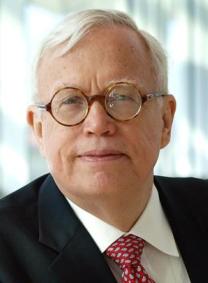Family background shapes children’s lives despite different social policies in U.S., Denmark

This article was originally published by UChicago News. Read the story on their site here.
Study suggests that educational and social mobility can be limited, even in a generous welfare state
Denmark is noted for its generous welfare state relative to the United States. Yet inequality in outcomes for Danish children based on family influence remains across social and economic classes at similar levels to the United States, according to a new study co-authored by Nobel laureate James Heckman of the University of Chicago.
The research, co-authored with Rasmus Landersø of the Rockwool Foundation Research Unit in Copenhagen, analyzes social mobility and inequalities in education, economic well-being and neighborhood in the two countries. The results suggest that educational mobility, ties between the wealth of children and their parents and neighborhood sorting based on family status are similar in Denmark and the U.S., despite the differences between their social policies.
For example, in spite of policies such as tuition-free education and generous support for public education in Denmark, the association between children’s and their parents’ education is roughly on par with the U.S., which spends far less ensuring equal distribution of resources for education. Children of college-educated parents are also advantaged relative to children of parents who did not finish secondary school in both places.
According to the study, intergenerational mobility in educational attainment declined when Denmark moved away from targeting the least advantaged groups and toward universality in its education politics, which fund schools across the country at the same level. Though it would seem that equal resources would lead to similar outcomes across the board, this is not the case, in part because of the important role that families play.
“Policymakers who advocate for adoption of features of the Danish welfare state in the U.S.—such as free college tuition, universal access to high-quality childcare and health care and equalization of expenditure on K-12 schools—should recognize that such provision does not guarantee equality of child and adult outcomes. Gaps in skills and health by family background are the same in the U.S. and in Denmark,” said Heckman, the Henry Schultz Distinguished Service Professor in Economics and the College, who has done pioneering research on the benefits of early childhood programs.
In addition to their findings about education, Heckman and Landersø also found that the transmission of income between generations may be much higher than previously believed: A new analysis of data from Denmark spanning the full lives of children and their parents shows that resources and financial well-being are tightly linked between generations.
“If equal Danish provision of services does not eliminate inequality in many important life outcomes, an uncritical adoption of Danish policy initiatives may not be effective as a way to ensure equality of opportunity,” said Heckman, who directs the Center for the Economics of Human Development at UChicago.
‘‘Formal equality in access does not guarantee equality of opportunity.’’
Beyond education and wealth, other trends are playing out at the neighborhood level, where families sort according to their status. Though this trend was well-documented in the U.S., the authors found comparable patterns in Denmark, where affluent families often move to wealthier areas at a specific time—during their first child’s preschool years—meaning that even when children get older and attend equally resourced public high schools, they have already assorted themselves by neighborhood. This ultimately leads to differences in school quality, since parents’ ability to support their children’s education and where teachers decide to teach often sort along similar lines.
“More advantaged families are better able to access and utilize programs, even when these are universally available,” Heckman said. “If there is one overarching conclusion from the study, it is that formal equality in access does not guarantee equality of opportunity.”
 THE UNIVERSITY OF CHICAGO
THE UNIVERSITY OF CHICAGO


